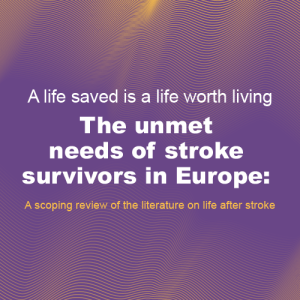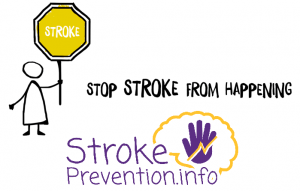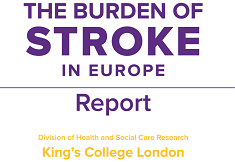Building on the preceding Helsingborg Declarations of 1995 and 2006, the European Stroke Action Plan was launched today at ESOC 2018. It creates an aspirational framework to drive healthcare policy, research priorities, local stroke management and patient-focused care to meet the need demonstrated in the ESO/SAFE Burden of Stroke report, with €45 billion direct and indirect healthcare costs each year, a 34% increase in strokes by the year 2035 due to the ageing population, and huge variations in the level of stroke care available across Europe.
Stroke Action Plan Chair, Prof Bo Norrving, said: “Resources for stroke do not match the societal impact and burden of the condition. ESO has joined forces with SAFE to define the priorities for stroke care and research across Europe over the next decade.”
The Stroke Action Plan has four overarching targets for 2030. The first is to reduce the absolute number of strokes in Europe by 10 %. “Over the past seven years, the number of new stroke patients in Sweden has fallen from 22,000 to 18,000 per annum,” said Prof Norrving. “There are similar trends in other high income countries, but the absolute figures are often contradicted by increasing population size and inadequate reductions in risk factors.”
The second target is to treat 90 % or more of all stroke patients in a dedicated stroke unit as the first level of care. Currently, less than 50% of stroke patients in Europe are treated in a specialist centre. “The provision of care which is specifically focused on stroke is fundamental to improved outcomes,” added Prof Norrving.
The Stroke Action Plan’s third target is to have national plans for stroke encompassing the entire chain of care from primary prevention to rehabilitation. Citing the UK as an example, Prof Norrving emphasised the benefit of government support in the development of services from acute stroke care, to follow up, rehabilitation and life after stroke.
The fourth target is to implement national strategies for multisector public health interventions in order to promote and facilitate a healthy lifestyle and reduce other risk factors. “We all know that lifestyle is an important risk factor for stroke,” added Prof Norrving. “But so too are environmental, socioeconomic and educational factors. There is enormous potential for improvement and we should engage with other programmes targeting these areas, like those of the World Health Organization.”
According to ESO President Prof Valeria Caso the next step of the Stroke Action Plan needs to be implementation. “The targets are ambitious but, as we have seen, achievable. I am pleased to say that ESO is already working on creating the network needed to overcome inequality in stroke care in Europe.”
Stroke Action Plan Co-chair, Jon Barrick, reinforced this message: “With this great collaboration we are trying to make sure more attention is paid to the whole stroke care pathway,” he said. “For instance, after a stroke has occurred, rehabilitation should be looked at more closely, as well as the financial impact of stroke.” He added that the notion of stroke as chronic condition is now being taking seriously. “Fatigue and long-term pain are not things that are necessarily front of mind in an acute stroke unit. Therefore, the addition of Life After Stroke as one of the Stroke Action Plan’s priorities is an important step forward. SAFE is working with ESO to ensure that when this action plan is revealed, we engage with politicians and decision makers ensuring that whole action plan is implemented. Although the Stroke Action Plan was motivated by the Burden of Stroke Report, SAFE is always driven by the fact stroke shatters lives and it is not given the priority is should have, given its impact on society and individual people. “It is clear that there are going to be more strokes and it is also clear that a life saved also needs to be a life lived,” concluded Barrick.
The Stroke Action Plan will be presented to the European Parliament next week (23 May 2018) by ESO President Elect, Prof Bart van der Worp, and SAFE President, Jon Barrick.
Please click on this picture below for seeing the interview with the key leaders of the European Stroke Action Plan:








